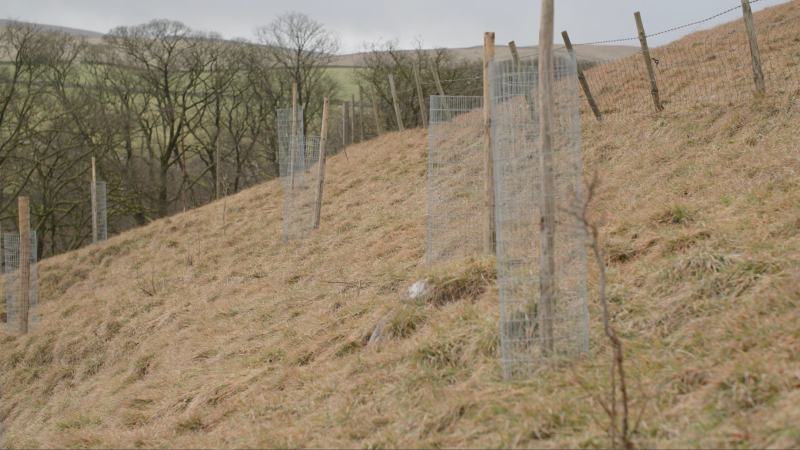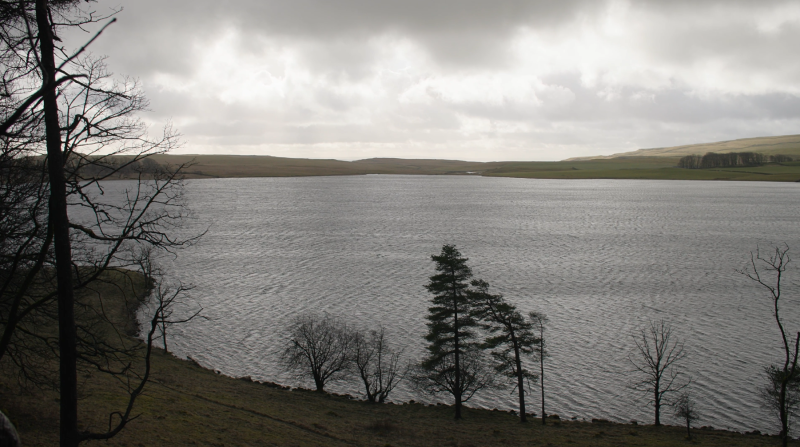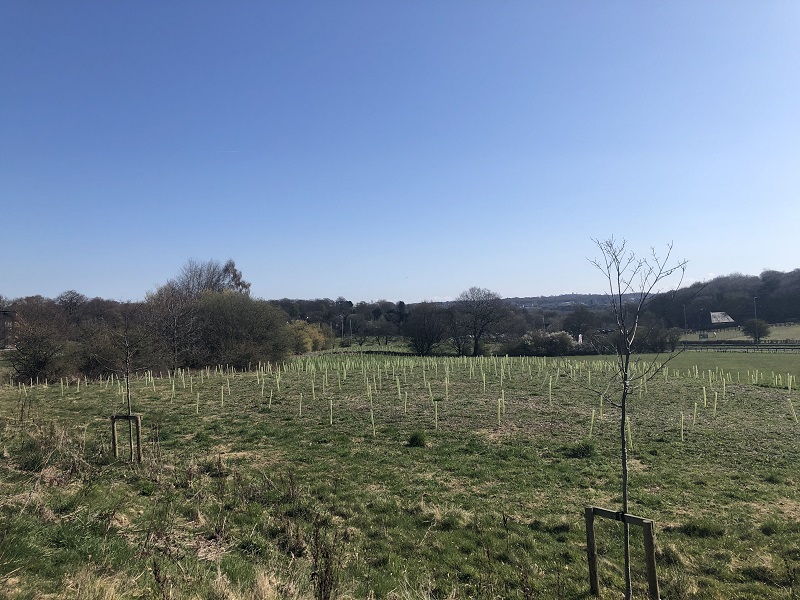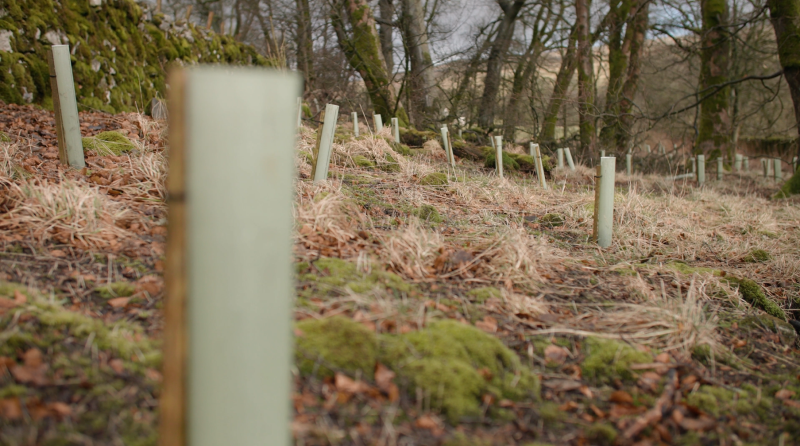Home
Leeds FAS2 Natural Flood Management
What is Natural Flood Management?
 Tree planting in Malham
Tree planting in Malham
Natural Flood Management (NFM) means creating and restoring natural features which slow the flow of water across a landscape, or store flood water temporarily. This allows the water to be absorbed into the soil or to evaporate, reducing the risk of flooding in the surrounding areas.
Within the Aire Catchment, the NFM measures that have been modelled and show the greatest impact on flood reduction are tree planting and works to increase the health and infiltration rate of soils in the upper reaches of the catchment. The project will focus on delivering these measures.
Why do we need the NFM works?
The area covered by Leeds FAS2 has experienced flooding many times. Notably in 2015, Storm Eva brought significant and widespread flooding from some of the highest river levels ever recorded.
Wetter winters, drier summers and increased rainfall linked to climate change means that many parts of the country—including Leeds—will become more likely to flood over time.
Leeds FAS2 is a combination of traditional engineering works, and NFM techniques to protect the FAS2 area from flooding up to a 1-in-200-year level. Read more about the scheme, and why it’s needed.
The NFM project is planning to be a catalyst for change in the River Aire catchment, to reduce flood risk to communities that live there and to ensure the landscape can be more resilient to climate change.
The NFM measures are crucial to the carbon reduction targets on the FAS2 project. They will provide environmental enhancements throughout the River Aire Catchment, in addition to reducing flood risk in Leeds. The project will enable the sequestration and storage of carbon in the uplands and in new woodlands. It will also support wildlife and protect existing habitats.
Who are the partners on the scheme?
Leeds City Council and the Environment Agency have worked in partnership to develop a catchment wide approach to Natural Flood Management. The involvement of The Woodland Trust, Forestry Commission and Community Forest Trust, who have partnered under the collective of the White Rose Forest, is integral to increasing the visibility of the scheme and creating a simple means of engagement across the catchment. Other partners include The Yorkshire Wildlife Trust and The Aire Rivers Trust.
The White Rose Forest already work closely with the communities within the catchment and have long-term relationships with many of the landowners. The Leeds FAS2 NFM works have benefitted from the White Rose Forest’s influence on landowners to become involved in the programme. We are now working with at least 150 stakeholders, funders and interested parties.
Due to the scale of the scheme stretching from Malham to Leeds City Centre, the project is also reliant on strong collaboration and mutual interest with the City of Bradford Metropolitan District Council, North Yorkshire County Council, Craven District Council, Lancashire County Council & Pendle District Council.
An important part of our partnership working is aligning objectives and sharing benefits. The outcomes of the LFAS NFM project will also contribute towards wider environmental projects across the north of England. This includes The Northern Forest, which has a target of planting 50,000,000 trees across the Liverpool to Hull corridor.
What interventions are we planning?
 Tree planting at the Brownlee Triathlon Site
Tree planting at the Brownlee Triathlon Site
The Leeds Flood Alleviation Scheme (LFAS) NFM Project is the first NFM programme in the UK to be implemented at catchment scale. It aims to reduce flood risk to Leeds by implementing a range of NFM measures throughout the Aire catchment.
Between 2018-2025, the project is implementing:
- Tree planting – as trees grow, their roots help to absorb moisture in the soil and increase the amount of water that the ground can store. The canopy cover associated with tree planting also contributes towards capturing and reducing carbon.
- Soil Management – by implementing practices such as soil aeration, we can reduce the compaction levels of soils within our catchment. This not only helps the ground to store more water more effectively, but it also increases its ability to store minerals and therefore grow crops more successfully.
Each of these works have been developed to ensure that their impacts are purely positive, and that they do not negatively impact on any existing features across the catchment.
Where are the works located?
 Malham TarnThe Leeds FAS2 is taking a catchment-wide approach to flood alleviation in Leeds. That means implementing measures throughout the 700km2 of the upper Aire catchment, the same as over 130,000 football pitches. Areas include Malham in the Yorkshire Dales, through Keighley, Bradford, and Leeds.
Malham TarnThe Leeds FAS2 is taking a catchment-wide approach to flood alleviation in Leeds. That means implementing measures throughout the 700km2 of the upper Aire catchment, the same as over 130,000 football pitches. Areas include Malham in the Yorkshire Dales, through Keighley, Bradford, and Leeds.
Flagship sites have been delivered at on the National Trust’s Malham Tarn Estate, with Broughton Hall in Skipton and at the Brownlee Triathlon Centre as part of Leeds University.
How will the works be delivered?
Sites will be identified in partnership with the White Rose Forest using a landowner engagement process. The pipeline of sites will evolve throughout the project lifecycle as additional landowners come forward. Delivery will be enabled through 3 main routes:
- The landowner will apply for an existing government grant, for example - Countryside Stewardship Grants.
- The landowner will deliver the works themselves in partnership with the Environment Agency or the White Rose Forest.
- The Environment Agency or the White Rose Forest will employ contractors to deliver the works themselves.
150,000 of the trees planted as part of this project will be supplied by the Leeds City Council’s Nursery, The Arium. The delivery of works will be paid by the project, but any ongoing costs associated with maintenance of the measures will be covered by the landowner.
What are the delivery targets?
To meet its flood risk reduction target, the project has estimated the scale of each NFM measure that needs to be implemented. The following delivery targets for individual NFM measures have been established:
- 930 hectares of new woodland planted
How will we measure the benefit of the works?
This is the first NFM project to be delivered in the UK to such a scale. Monitoring and recording the progress of the project will be invaluable for research and future schemes.
We will record the work undertaken in the Aire Catchment on a mapping platform and will be seeking opportunities with interested organisations to enable long term monitoring of the project. The tools being developed for this project, such as the mapping platform, have been developed so that they can be replicated on other similar projects in the future.
To quantify the reduction in flood risk to the city of Leeds, a hydrological model will be used. Critical success factors (such as carbon sequestration and biodiversity increase) have also been established to measure project progress and successes in addition to the reduction in flood risk.
What have we achieved so far?
Pilot Schemes
Between 2018 and 2020, the team delivered a pilot programme of sites to trial different methods of delivering NFM. The learning from this pilot programme is being used to scale delivery across the whole River Aire catchment.
Works were delivered at Harden Moor, Marlfield Farm, Eshton Beck, and several farms across the Upper Aire Catchment.
In February 2019, Storm Ciara brought significant rainfall to the River Aire Catchment, testing the measures implemented at the Leeds FAS NFM Pilot sites. At Marlfield Farm, the implemented NFM measures successfully slowed the flow of water across the farm during the storm.
NFM Centre of Excellence at Bodington Fields

At the Brownlee Triathlon site in Bodington Fields, Leeds, a range of NFM measures have been installed including:
- Leaky wood dams
- Balancing ponds
- Wetland scrapes and cross-track drains
- Wildflower areas
- Overland flow barriers
- Woodland and tree planting
These interventions will contribute to flood alleviation targets, but also serve as a “living lab” allowing academics to measure the success of the different approaches to NFM. Read more about the Brownlee site on the Leeds University webpage.
Broughton Hall

Great work continues at Broughton Hall alongside the significant tree planting already delivered. We have commenced the development of a range of Natural Flood Management interventions including soil aeration, culvert daylighting, gully blocking and leaky barriers, as well as a research hub led by JBA Consulting. The site will also link with the University of Leeds.
Keighley Tree Planting

Over 2021 and 2022 we have worked with Keighley Town Council and the River Stewardship Company to plant almost 40,000 trees across several sites within Keighley, including some areas of community orchards.
Find Out More
 Tree plating in Malham
Tree plating in Malham
If you live upstream of Leeds and think you have suitable land to implement NFM measures, we would love to hear from you. Please get in touch by emailing: LeedsFAS.NFM@environment-agency.gov.uk
Please sign up to receive our updates by emailing LeedsFAS.NFM@environment-agency.gov.uk. Please include “MAIL SIGN UP” within the with the subject header.
For more information on the Leeds Flood Alleviation Scheme please visit: www.leeds.gov.uk/fas
Follow the links below for more information on aspects of the Leeds FAS2: